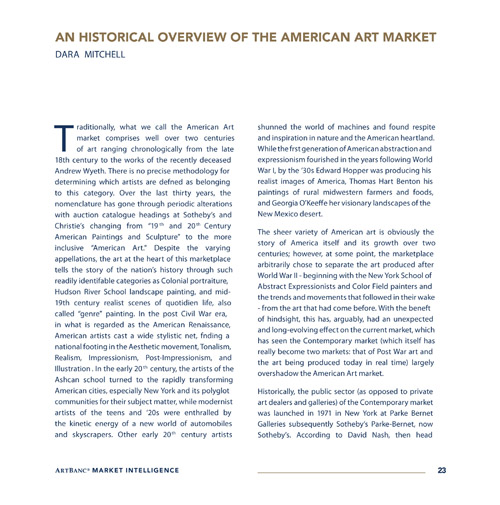The following article was written for the January 2014 issue of ArtBanc Market Intelligence.
 Traditionally, what we call the American Art market comprises well over two centuries of art ranging chronologically from the late 18th century to the works of the recently deceased Andrew Wyeth. There is no precise methodology for determining which artists are defined as belonging to this category. Over the last thirty years, the nomenclature has gone through periodic alterations with auction catalogue headings at Sotheby’s and Christie’s changing from “19th and 20th Century American Paintings and Sculpture” to the more inclusive “American Art.”
Traditionally, what we call the American Art market comprises well over two centuries of art ranging chronologically from the late 18th century to the works of the recently deceased Andrew Wyeth. There is no precise methodology for determining which artists are defined as belonging to this category. Over the last thirty years, the nomenclature has gone through periodic alterations with auction catalogue headings at Sotheby’s and Christie’s changing from “19th and 20th Century American Paintings and Sculpture” to the more inclusive “American Art.”
Despite the varying appellations, the art at the heart of this marketplace tells the story of the nation’s history through such readily identifiable categories as Colonial portraiture, Hudson River School landscape painting, and mid-19th century realist scenes of quotidian life, also called “genre” painting. In the post Civil War era, in what is regarded as the American Renaissance, American artists cast a wide stylistic net, finding a national footing in the Aesthetic movement, Tonalism, Realism, Impressionism, Post-Impressionism, and Illustration. In the early 20th century, the artists of the Ashcan school turned to the rapidly transforming American cities, especially New York and its polyglot communities for their subject matter, while modernist artists of the teens and ’20s were enthralled by the kinetic energy of a new world of automobiles and skyscrapers…